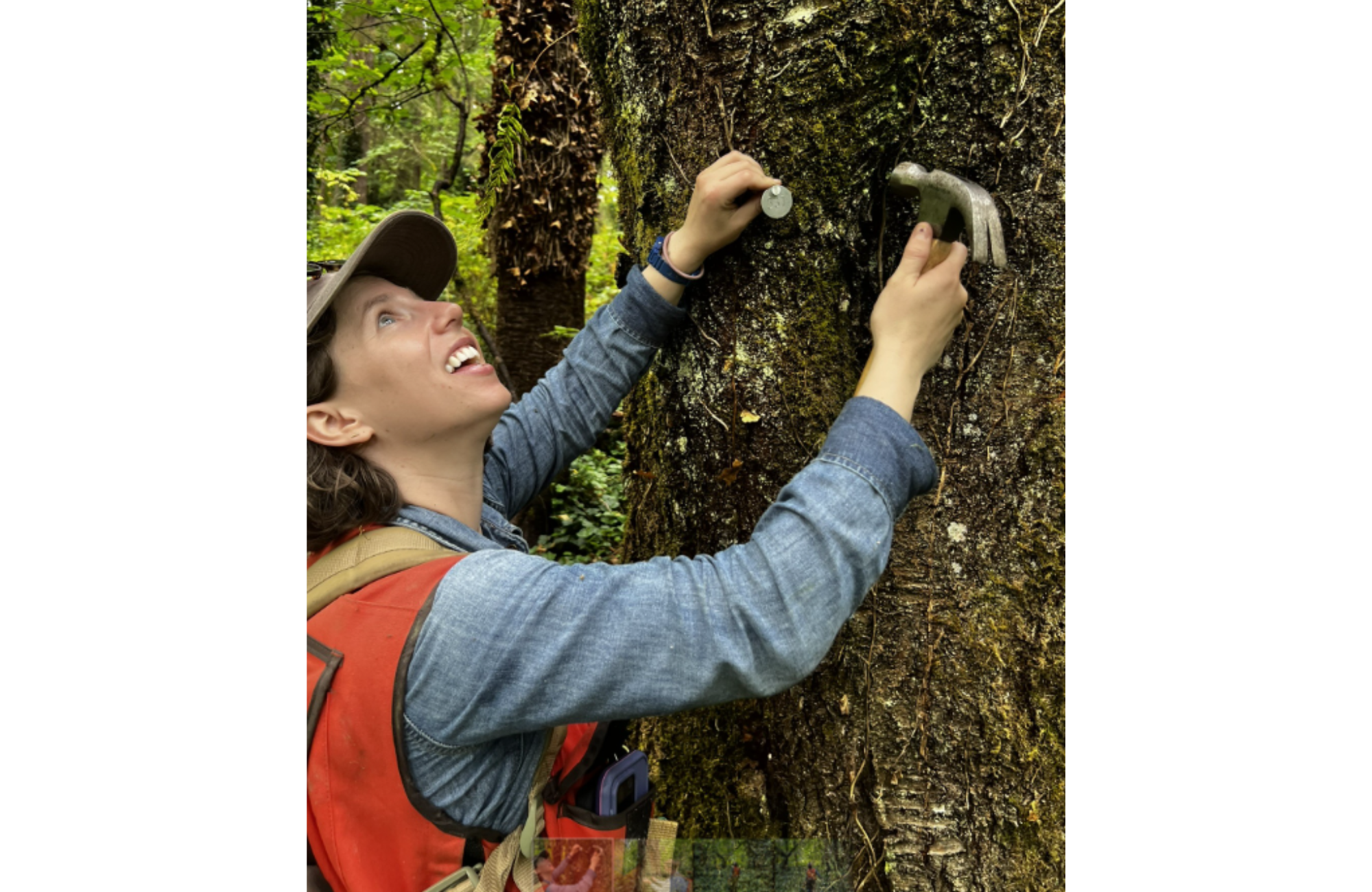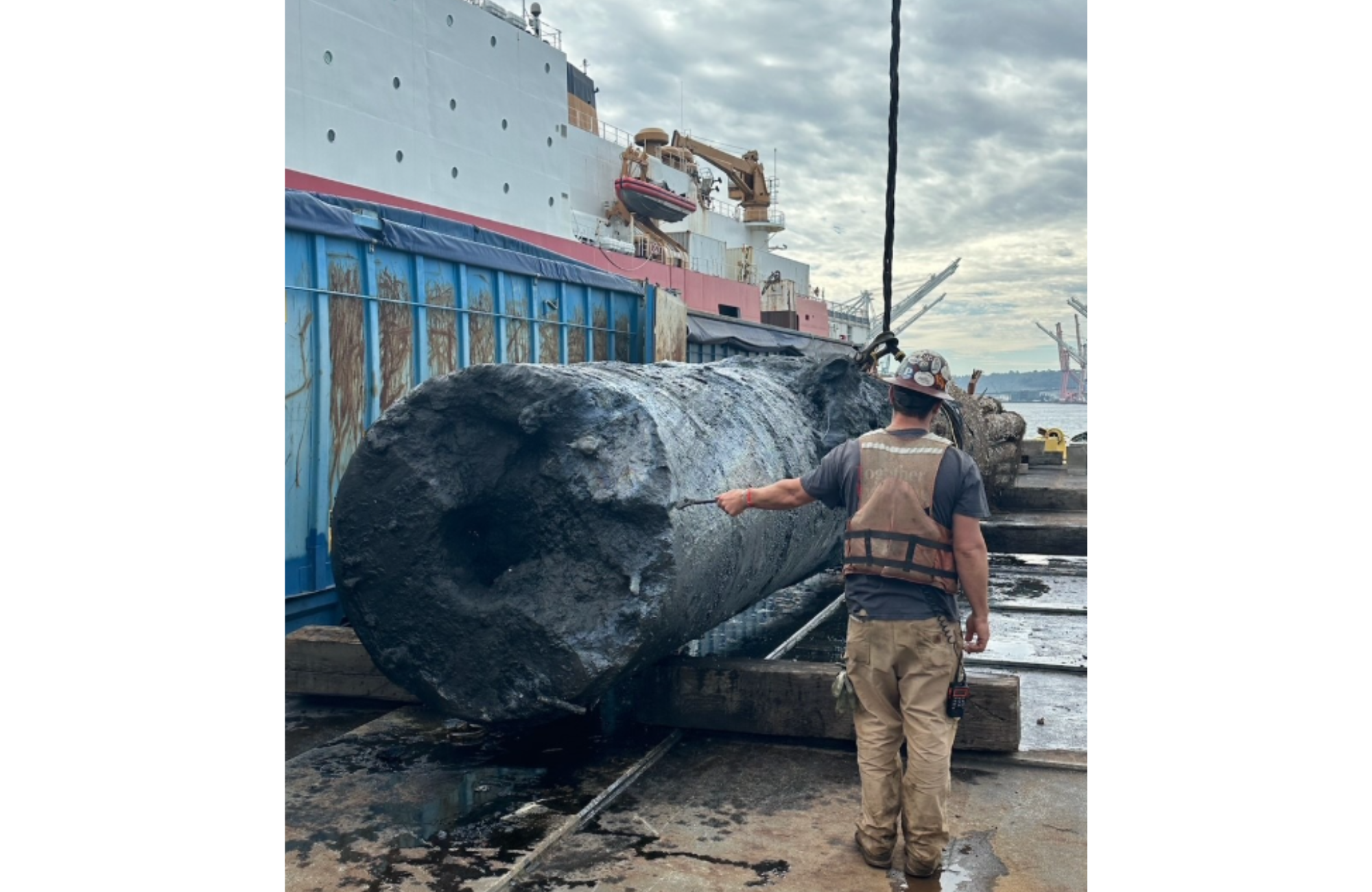Any Given Day: The life of Port of Seattle environmental stewards
August 11, 2025
Sponsored
From the Seattle-Tacoma International Airport to Elliott Bay, meet the team managing the behind-the-scenes work shaping the region’s environmental future.


Presented by Port of Seattle
The Port of Seattle is home to a dedicated team working every day to reduce emissions, restore habitat, support communities, and lead the transition toward clean energy. From the busy terminals of the Seattle-Tacoma International Airport (SEA) to the working waterfront of Elliott Bay, this team manages the behind-the-scenes work that helps shape the region’s environmental future.
Their responsibilities span everything from tracking emissions to mapping legacy trees across the Port’s 400 acres, from investigating mysterious underwater hazards, to assessing the health of shorelines. Their days are as varied as the ecosystems and communities they serve.
Here’s what a day looks like through their own eyes.

My day started early — 6 a.m. to be exact — with a webinar based in Europe. The topic? Policy outcomes from the International Maritime Organization and what they mean for our clean maritime fuel goals. I was replying to emails with one hand and sipping coffee with the other.
After dropping my daughter at school, I took a call with one of our Environmental Protection Agency Planning Grant sub recipients [who manage specific portions of projects] to talk about their research on emerging maritime fuels.
From there, I checked in with each of my team members. One is updating our maritime emissions inventory methodology, which is how we measure, track and report on greenhouse gas emissions from our Port and those who use it. Another is conducting energy audits to find ways to save money and reduce emissions across our facilities. We’re even troubleshooting a particularly stubborn solar panel installation — yes, it’s as hands-on as it sounds.
In the afternoon, I briefed two Port Commissioners on our new Seattle Waterfront Clean Energy Strategy and then jumped into a community meeting focused on air pollution in the Duwamish Valley. We’re working to ensure our clean energy roadmap not only meets operational goals but benefits our neighbors, too.
My job lives at the intersection of spreadsheets and storytelling. One minute, I’m calculating how many metric tons of greenhouse gases we’re avoiding thanks to cruise ship shore power. The next, I’m visualizing that data in Tableau to show how our climate actions tie into the Port’s Century Agenda.
I often do a bit of detective work, investigating energy use spikes at facilities, forecasting how much renewable natural gas we need, or tracking the adoption rate of electric vehicles in rideshare fleets. It’s dynamic work, and I get to collaborate across the Port—from Business Intelligence to Maritime Operations.

Mapping the Trees That Matter Most
Risa Askerooth, Environmental Management Specialist, Aviation Natural Resources
I spent about 50 hours last summer trekking through wetlands and woodlands, mapping “high value” trees on 50 acres of Port property. These trees — often more than 30 inches in diameter or of ecological value — are prioritized for protection or replacement under our SEA Land Stewardship Plan.
Out in the field, I was equipped with a GPS unit, Rite-in-the-Rain notebook, a tree tag hammer, and plenty of sunblock. My team and I ducked under brush, bushwhacked through blackberries, and ate wild berries when we needed a break.
Back at my desk, I use ArcGIS to analyze the data and create maps that guide ivy removal efforts. It’s fieldwork with a long-term legacy.

Some mornings start with a long commute, but it’s worth it when my day includes hopping on a boat and getting to call it my office for the day. With colleagues, I inspect the shoreline of the Lower Duwamish River and East/West Waterways. We look for slope stability issues and opportunities to replace riprap (big rocks to prevent erosion) with nature-based solutions like anchored logs and native vegetation.
Along the way, we might spot ospreys diving for fish, bald eagles circling overhead, or harbor seals bobbing along with the tide. Back at the “land” office, I pivot to meetings, sometimes about salmon recovery, sometimes about budget spreadsheets. It’s all connected — how we invest in our shorelines today determines the resilience of these ecosystems tomorrow.

Working with Our Neighbors
Paris Edwards, Senior Environmental Management Specialist, Aviation Noise Programs
Every call or email about aircraft noise is a chance to connect. When someone contacts us about a change in flight paths or a noisy night, I dive into the data, investigate their concern, and explain what’s within the Port’s control — and what isn’t.
I always follow up with links to our programs and resources. But what really matters is the conversation itself. It’s about transparency and helping residents understand how we’re working to make things better — through sound insulation programs, technology upgrades, and collaboration with the Federal Aviation Administration and airlines.

Solving Underwater Mysteries
Mike DeSota, Senior Environmental Program Manager, Compliance and Data Management
No two days are the same in my job! One morning, I got a call about an unknown obstruction detected during a tribal bathymetric survey near Terminal 46. We mobilized our ROV (an underwater drone) and discovered it was an old WWII-era pile cap. Removing it restored critical fishing access for local tribes.
And then there are derelict boats — abandoned, often leaking — where I manage everything from legal notices to demolition, ensuring safe removal and reimbursement from the state.
It’s not glamorous, but it’s essential. Every issue we solve ensures a safer, more equitable environment for people, fish, and the future.
From the Ground to the Water to the Sky
They may have different roles and specialties, but these Port of Seattle staff are united by the same mission: to create a more sustainable and equitable future. Whether tracking emissions, protecting trees, engaging with neighbors, or restoring critical shorelines, each plays a role in helping the Port lead the way toward environmental resilience, one day and one decision at a time.
The Port of Seattle’s mission is to promote economic opportunities and quality of life in the region by advancing trade, travel, commerce, and job creation in an equitable, accountable, and environmentally responsible manner. The Port owns and operates Seattle-Tacoma International Airport (SEA), Fishermen’s Terminal, public marinas, two cruise ship terminals, a grain terminal, real estate assets, and marine cargo terminals through its partnership in the Northwest Seaport Alliance. Port of Seattle operations help support nearly 205,000 jobs and $12billion in wages throughout the region. Over the next 12 years, the Port’s Century Agenda seeks to create an additional 100,000 jobs through economic growth while becoming the nation’s leading green and energy-efficient port.

Search
RECENT PRESS RELEASES
Related Post



